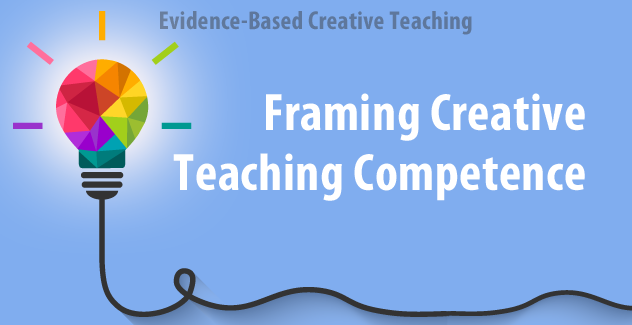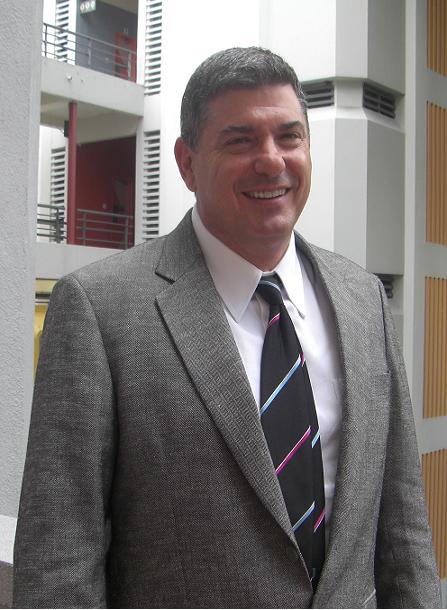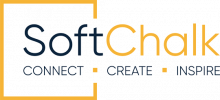
In the previous post, I explained and illustrated the key components of Evidence-Based Teaching; what Petty (2009) referred to as a ‘Revolution in Teaching’.
In this third post, I add the C to EBT. This resulted from over a decade of research, application in many countries and cultural contexts, and much metacognitive activity (e.g., painful thinking about stuff including my own thinking) to demystify creativity in the context of teaching and put to bed my personal nemesis of understanding what makes the ‘naturals’ in teaching. Yes, Peter Drucker—I think I now know, at least in good part.
Framing Creative Teaching Competence
Firstly, we need to be clear about what creativity entails in the context of teaching. There is much that is still ‘fluffy’ (an old English term for vague and largely untrue) in the literature on creativity. This persists as developing creativity is a billion-dollar industry, just as the myth of learning styles persisted for so long—probably another billion-dollar industry, but only another part of the Jurassic Park compound.
Creativity is certainly one of today’s global buzzwords, and would figure high on any list of so-called 21st century skills. Furthermore, if it is such a necessary attribute, so essential in the worlds of engineering, business and medicine, it should also be similarly valued in education—and teaching is the core activity of education. It is important, therefore, to make the best sense we can on what creativity entails in the context of teaching, and the ways in which it can be utilized at the level of practice. As a basic assumption it would seem logical to approach creativity in teaching as analogous to creativity in any domain, as it involves combining existing knowledge in some new form to get a useful result. As Amabile (1996) suggested:
A product or response will be judged creative to the extent that (a) it is both a novel and appropriate, useful, correct or valuable response to the task at hand, and (b) the task is heuristic rather than algorithmic. (p.35)
Of course, any definition of creativity inevitably raises questions about what constitutes novel, in whose eyes, by what criteria, and to what extent? Furthermore, the notion of useful, correct or valuable also involves subjectivity. Rap music may meet certain criteria of novel, but in no-way does it feel useful or valuable to me. Hence, we have little choice but to live with a fair measure (whatever that is) of subjectivity in making sense of the world. For example, we have beauty contests and there are judges, contestants, decisions-made and winners identified. Well how does that work when supposedly, “Beauty is in the eye of the beholder”? Well it is, and it isn’t—right? Yes, beauty is subjective, but there’s a lot of common agreement, explicit or otherwise, about what its key features are, at least at a heuristic level; and that’s why I have yet to win one.
Secondly, there is no simple ‘clicking of creative switches’ to get creativity outcomes, nor is ‘thinking outside the box’ a useful analogy. Rather, a better frame is to see this process as changes in internal neural connections and representations in the box, which is, of course, the human brain, that result in new perceptions of an aspect of reality. I have been a participant in many creativity workshops/meetings, in which various activities and techniques have been used to generate creative ideas. Not infrequently, there have been people involved who know relatively little about the topic being explored, spend many hours sticking Post-its on a wall, doing a lot of ‘happy-clappy’ positive psychology and what is the result? The systematic discovery of the obvious, in most cases.
I am not criticising creative thinking techniques and tools, but unless you have people who know a fair bit about different topics, especially in the field that you want to come up with novel and useful ideas in, much can be activity for activity sake. Creativity is largely task specific, and creative people usually have expertise in the field in which they work. Indeed, highly creative people are often experts across more than one field, which will further assist the process of forming new neural connections and subsequent generation of useful new perceptions about things. Leonardo Da Vinci, for example, was no slough on the knowledge stakes, frequently referred to as a polymath (i.e., a person whose expertise runs across subject domains and professional fields).
Invariably, creativity involves more than having rich knowledge bases and expertise. Many experts are not noted in the creativity ratings. The work of Hatano & Inagaki (1986) is interesting in terms of differentiating performance at the highest level of competence, which is expertise. They distinguish between two broad categories of expertise, “routine expertise” and “adaptive expertise”. Routine expertise is characterized by a high level of technical proficiency across the typical range of real world problem solving contexts. However, as problems become less familiar or novel, the performance of routine experts can dip significantly. In contrast adaptive experts can reframe problems in different ways, modify or invent strategies and combine skills to deal much more effectively in solving such problems.
Creative teaching is, therefore, different from effective teaching, though both involve a high level of pedagogic literacy and proficiency in terms of technical competence. Creative teachers have the added capability of combining existing knowledge to produce novel and useful learning experiences as well as being able to reinvent their pedagogic strategies in situ, to meet changing demands in different learning contexts. They can make connections between methods, activities and resources that may not always seem to be logically connected, but in practice make highly significant impacts on aspects of the learning process. For example, I saw a teacher struggle to get attention while teaching Newton’s Second Law of Motion. He started the lesson by showing the law and reading it word by word:
Newton’s second law of motion can be formally stated as follows: The acceleration of an object as produced by a net force is directly proportional to the magnitude of the net force, in the same direction as the net force, and inversely proportional to the mass of the object.
This was followed by some 40 minutes of equations which completely lost students attention, as well as mine. Subsequently, and more creatively he taught the same content but this time with an advance organizer of a picture of the famous footballer David Beckham preparing to take his customary ‘bend it like Beckham’ free kick. Just having a picture of David Beckham got student attention as a novel and interesting Von Restorff Effect (the tendency of the brain to activate when presented with a novel stimulus). Many of the students were avid football fans and David Beckham has appeal beyond his footballing skills—well, according to many ladies I know.
The students were then asked to consider the following two scenarios and the impact they might have in terms of the acceleration of the football once struck by David:
Scenario 1: One of the opposition players changes the football before the free kick has been taken with a ball that is 20% heavier than the original ball.
Scenario 2: The ball remains the same, but David has been doing extra fitness training and can now strike the ball with around 10% more power.
I’m sure you have worked this out, so I won’t need to bore you with my limited display of physics jargon. While not a perfect analogy, it was sufficient to get the students’ attention, create interest and engagement, make the concept and principles underpinning the law more concrete and real world based, as well as inject some fun into the learning experience. There is no logical connection between Newton’s Second Law of Motion and David Beckham taking a free kick, but through creative combination, the perception emerged of its usefulness as an analogy for teaching a potentially dry concept in mechanics.
Hence, for Creativity to occur, it is necessary to be able to perceive some aspect of reality in a different light, and that requires some internal neural restructuring of existing knowledge. As Mauzy and Harriman (2003) describe:
…breaking and making connections is where the fundamental action of the creative process takes place, and what’s known in the fields of psychology and brain physiology lines up with this. (p.22)
For this reason, teachers who activity seek out new analogies, stories, activities, examples, humour, and develop highly effective communication styles (e.g., ability to smile naturally, use positive eye contact, talk with a clear expressive tone—all evidence-based) will, over time, develop such creative capability, which I refer to as creative teaching competence. Creativity is essentially just another aspect of the generic process of learning, but with a different cognitive spin (so to speak); the building of more differentiated frames on reality. As de Bono makes fully explicit:
In my view learning creative thinking is no different from learning mathematics and any sport. (p.57)
A similar analogy can be applied to the naturally funny people in life, whether professional comedians or otherwise. Do such people have funnier experiences than those lacking humour, or do they deliberatively look for the funny side of experience, provoking new ways of experiencing everyday reality, hence creating the conditions in which funny outcomes are more likely? For example, in East London humour (well, when I lived there some 30 years ago), there was a type of humour which was referred to as ‘selling a dummy’. This involved making a silly statement in jest, and waiting to see the response of others. For example, if someone talks perhaps too positively about someone else (e.g., they are very talented, kind, generous), a listener may respond by saying, “Well, she must have some good points as well”. If this results in the speaker, taking this seriously and responding with some mild annoyance, he/she has been “sold a dummy”. Now, what’s clever, if the person who was being sold the dummy initially does not falls for it, and sells a dummy back, it’s called a ‘double dummy’ and that’s a very witty thing to be able to do. Can you do this?
As a Cockney from East London, I think I know the answer to the question posed in the last paragraph. If you look at things in the same way and do the same things in the same situations, you will typically (unless there is a chance provocation) get the same results. To get different results, it is necessary to do something differently. Hence it is not surprising that people who desire and persevere in deliberately connecting things that may not initially seem to be naturally connected and look for new ways of perceiving aspects of reality are likely to produce more creative outcomes, whether in engineering design, teaching, or in making people laugh.
Creative Teaching Competence, based on Evidence-Based Teaching Practices and Principles, is the essential mix of Evidence-Based Creative Teaching. Like other areas of expertise, quite simple to understand when you know how to do it well, but requiring much by way of volition and deliberate practice to get there in the first place. However, I think it goes some way towards demystifying what the “naturals” in teaching seem able to do. Like many experts, they may not be able to explain the full basis of their expertise, as much of it has been learned latently and operates as unconscious competence. However, once made explicit, we can model such expertise, identify its components and how it works, and, subsequently, help others to become more creative teachers.
In the next post, for purpose of specific illustration, I apply EBCT to the design and facilitation of blended learning, endeavoring to apply Charles Mingus’s maxim:
Making the complicate simple, awesomely simple, that’s creativity
References
Amabile, T. A. M., (1996) ‘The Meaning and Measurement of Creativity’, Ch 2 pp 19 –40, Creativity in Context. Westview Press, Colorado.
De Bono, E., (2003) Serious Creativity 2.Allscript Establishment, Singapore. HarperBusiness, New York.
Hatano, G. & Inagaki, K., (1986) Two courses of expertise. Child development and education in Japan: 262–272.
Mauzy, J. & Harriman, R., (2003) Creativity Inc: Building an Innovative organization. Harvard Business School Press, Boston, Massachusetts.
Mingus, C. Can be accessed at: https://eyeondesign.aiga.org/charles-mingus/. Last Accessed at 22nd December, 2017.
 About Dennis Sale: Dennis Sale is the author of Creative Teaching: An Evidence-Based Approach (Springer, 2015), the first book to demystify creative teaching and make explicit how it works at the level of specific teaching practices, underpinned by the creative application of cognitive scientific principles. He has worked in all sectors of the British education system, spending some 3 decades training and mentoring over 3000 teaching/training professionals in many countries and cultural contexts. Presently he is Senior Education Advisor for Singapore Polytechnic, and Principal Investigator for a 2-year Ministry of Education research project, entitled ‘Enhancing Student’s Intrinsic Motivation: An Evidence-Based Approach’.
About Dennis Sale: Dennis Sale is the author of Creative Teaching: An Evidence-Based Approach (Springer, 2015), the first book to demystify creative teaching and make explicit how it works at the level of specific teaching practices, underpinned by the creative application of cognitive scientific principles. He has worked in all sectors of the British education system, spending some 3 decades training and mentoring over 3000 teaching/training professionals in many countries and cultural contexts. Presently he is Senior Education Advisor for Singapore Polytechnic, and Principal Investigator for a 2-year Ministry of Education research project, entitled ‘Enhancing Student’s Intrinsic Motivation: An Evidence-Based Approach’.
Dennis is a long time SoftChalk user and has conducted workshops for educators showcasing SoftChalk as a way to improve their lessons.

Leave a Reply